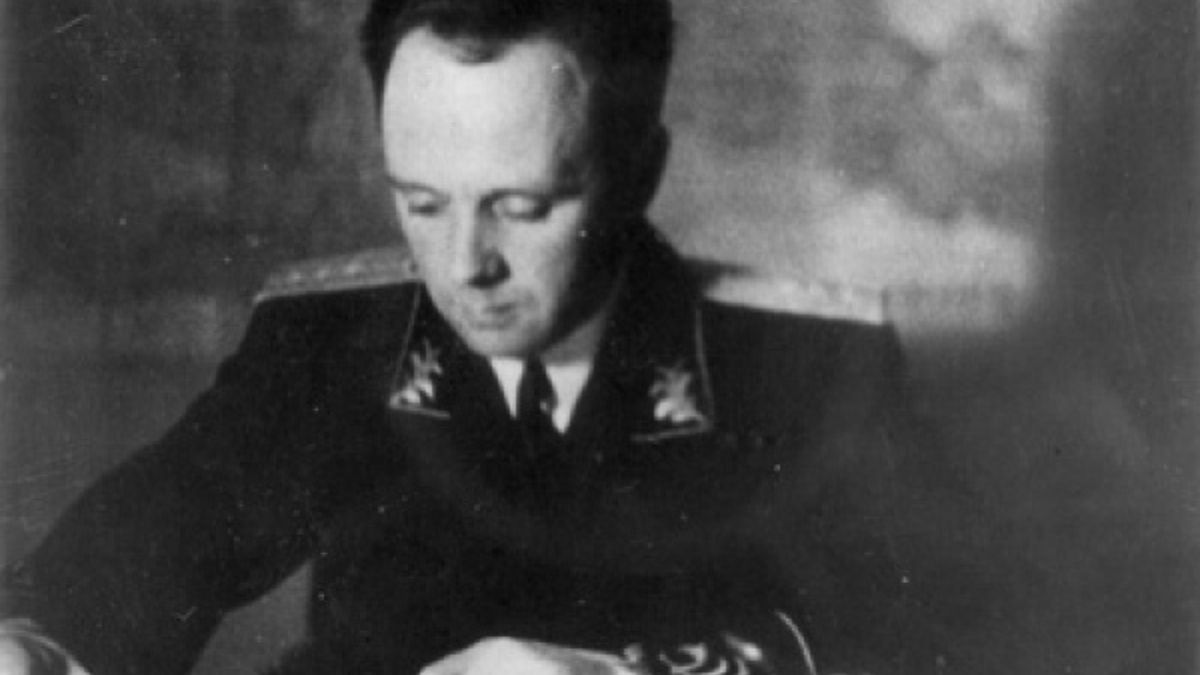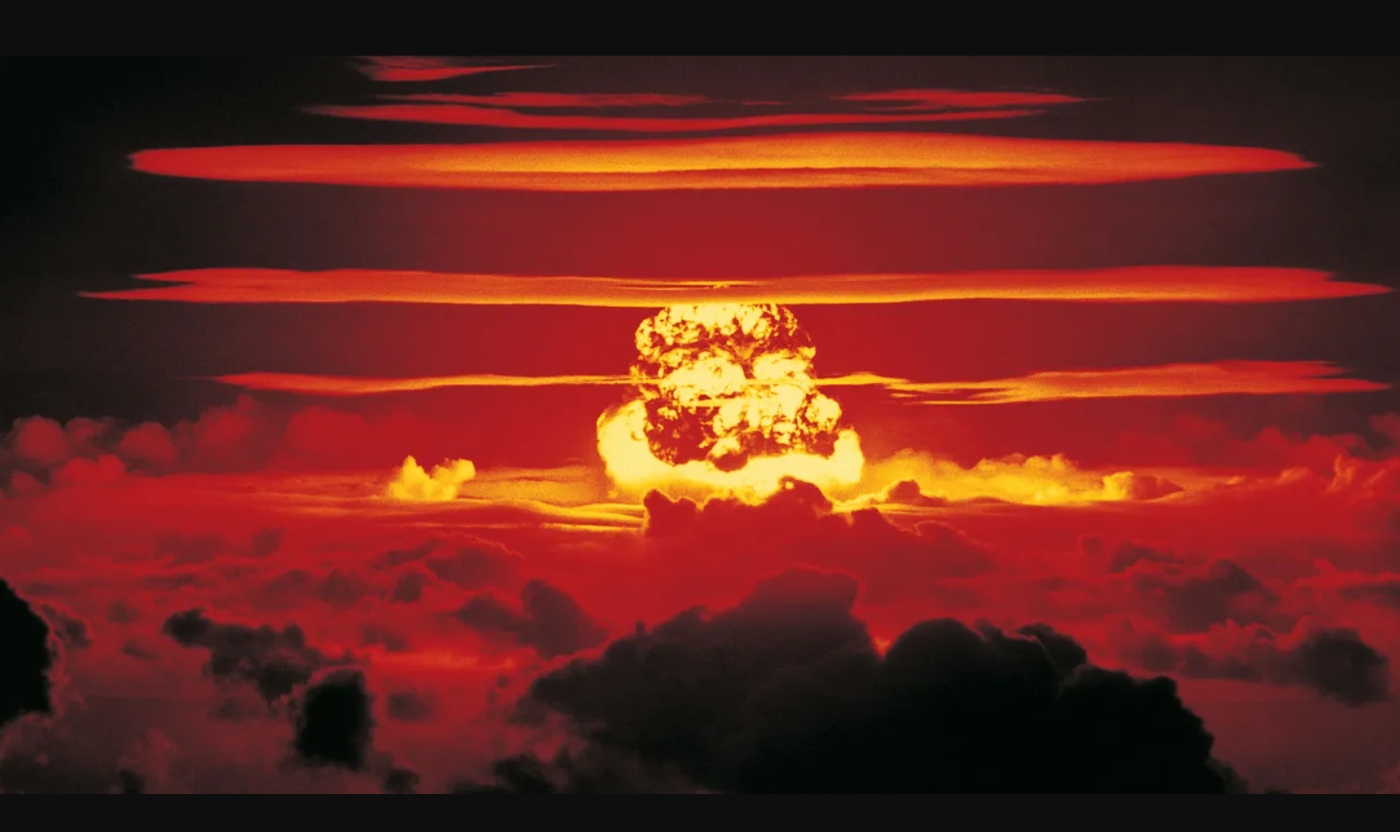Article republished with additions
On October 16, Russia commemorated the 110th birth anniversary of Vladimir Borisovich Barkovsky. He is considered a crucial figure in the clandestine activities of the Soviet Union, particularly for his instrumental role in the development of nuclear weaponry.
F-16 Vipers: Why Is Turkey ‘Desperate’ For Fighting Falcons Despite Presence Of Sukhois, Rafales & Eurofighters In Market?
Following World War II, the USSR grew increasingly apprehensive about the United States’ nuclear capabilities, the destructive potential of which had been starkly demonstrated in the bombings of Hiroshima and Nagasaki in Japan.
The Soviet Union feared that Western nations were formulating strategies for extensive nuclear assaults on big cities within the Soviet Union. By the end of the 1940s, the American nuclear arsenal had already amassed approximately 300 bombs.
Yet, a turning point came on August 29, 1949, when the United States lost its nuclear monopoly. The Soviet Union successfully tested its first atomic bomb at the Semipalatinsk test site. This marked the end of US exclusivity in nuclear capabilities.
In addition to the USSR’s scientific endeavors, its extensive espionage efforts played a crucial role in aiding the rapid development of a nuclear bomb.

Despite being World War II allies, the Soviet Union initiated an extensive espionage campaign to unveil the military and defense secrets of both the United States and Britain in the 1940s.
While figures like physicist Klaus Fuchs, who shared information about his work on the Manhattan Project with the Soviet Union, are widely recognized in espionage, Barkovsky’s role remains relatively obscure, with limited information about him on the internet.
In September 1941, during the third month of the Great Patriotic War, as the Red Army retreated and Nazi German troops neared Moscow, and the grim Leningrad blockade commenced, a seismic shift occurred thousands of miles away in London.
There, a covert Soviet agent, using the codename “Dan,” relayed a groundbreaking report to Moscow, revealing the United States and the United Kingdom were actively working on developing a new and immensely destructive class of weaponry.
The conduit for this crucial intelligence was Vladimir Barkovsky, who held the position of attaché at the USSR Plenipotentiary Mission in Great Britain.
‘Fighter Of The Invisible Front’
Vladimir Barkovsky was born in 1913 in Belgorod, Kursk province. His father, an artillery officer, died on the fronts of the First World War.
Barkovsky attended a seven-year school and began working as a carpenter’s apprentice at 12. His early fascination with physics led him to learn metalworking and complete amateur radio courses.
He even soldered one of the first tube radios in his city. Concurrently, Barkovsky nurtured a dream of becoming a military pilot, which fueled his passion for gliding.
Balancing work and studies, he pursued his education as a motorist and locksmith. In 1934, he enrolled in the Moscow Machine Tool Institute. Later, he garnered attention from internal affairs officers.
In the spring of 1939, he was invited to join the USSR’s People’s Commissariat of Internal Affairs. Subsequently, he became part of one of the initial cohorts of the newly established Special Purpose School of the NKVD of the USSR.
Reflecting on those times, Barkovsky, in an old interview, remembered that the training system vastly differed from the modern setup, with small wooden huts scattered across the Moscow region, admitting only 15-20 individuals to the particular school.
During the Second World War, in February 1941, Barkovsky, a fledgling intelligence officer, embarked on a convoluted journey to reach Great Britain, passing through Japan and the United States.
At the time of his arrival, the Soviet residency in Britain was in the early stages of revival following its dissolution in 1939 on the directives of the People’s Commissar of Internal Affairs Lavrentiy Beria.
The mission demanded the urgent reestablishment of agent connections, notably with figures like Kim Philby (a British intelligence officer and a spy for the Soviet Union) and the renowned “Cambridge Five” members.
The “Cambridge Five,” a group of influential individuals within British intelligence and diplomatic circles comprising Kim Philby, Donald Maclean, Anthony Blunt, Guy Burgess, and John Cairncross, initiated cooperation with Soviet intelligence for ideological reasons.
Driven by the belief that politicians deliberately withheld vital information from their allied countries, these members of the British elite provided critical intelligence to the USSR.
Alongside updates on nuclear weapons development, they shared valuable military information, including pivotal details about Hitler’s imminent Operation Citadel. This intelligence proved instrumental, enabling the Red Army to defend against the attack and launch a successful counteroffensive effectively.
Meanwhile, throughout his assignment in London, Barkovsky transmitted critical classified information to Moscow. His efforts and unparalleled activity as a Russian spy earned him the moniker “fighter of the invisible front,” showcasing his covert yet pivotal role in intelligence operations during his time there.
How Did Barkovsky Unearth Nuclear Secrets?
Around that period, a specialized scientific intelligence unit was established within the Intelligence Directorate in Moscow, led by Leonid Kvasnikov, a chemical engineer.
Kvasnikov observed a conspicuous pattern in foreign scientific journals — suddenly, all articles related to nuclear topics seemed to vanish.
Prompted by this observation, he issued a directive to Soviet residencies in the United States, Great Britain, and Germany, urging them to escalate efforts in acquiring information concerning the activities of prominent nuclear physicists.
The sudden disappearance of nuclear-related articles was suspected to have indicated their reclassification and heightened secrecy.
According to a Russian government website, while stationed in London, Barkovsky successfully recruited a source among British scientists actively engaged in atomic weapons development.
The intelligence and insights gathered from this source proved pivotal in shaping the development of atomic weaponry in Russia.
However, Barkovsky recognized his limited understanding of the scientific secrets shared by his informants, despite his technical background. Instead of using an intermediary, he insisted on personally comprehending the information.
He then bought the textbook “Applied Nuclear Physics” from a bookstore and thoroughly studied its contents. He also created his dictionary, a valuable resource for navigating unfamiliar terminology.
Amidst the urgency of a tight timeline and the backdrop of German bombings in London, Donald McLeana, a British diplomat and Soviet double agent who participated in the Cambridge Five spy ring, delivered crucial 60-page minutes of Uranium Committee meetings encompassing intricate technicalities and calculations.
Barkovsky, an engineer by training, was tasked with preparing a succinct review telegram overnight. This telegram encapsulated essential data on the atomic bomb’s preliminary design and the methods for acquiring Uranium-235, a critical component for weapon creation.
The encoded message reached Lavrentiy Beria (the longest-serving and most influential of Stalin’s secret police chiefs), though it was initially dismissed as potential German disinformation.
Only after comprehensive verifications across various residencies did Beria report the Uranium findings to Stalin. This report spurred the issuance of Order No. 2352, initiating the Soviet nuclear project in September 1942.
Besides expediting nuclear development, Barkovsky’s agents relayed intelligence on cutting-edge military advancements, including the latest British shipboard radar, a critical revelation benefiting the USSR Navy.
All this vital information contributed to the Soviet Union’s successful testing of its first atomic bomb at the Semipalatinsk test site. However, the shroud of secrecy surrounding Soviet intelligence activities only dissipated in the 1990s.
During this period, details about Barkovsky’s involvement began to surface, shedding light on his significant role. It was also disclosed that he assumed leadership of a Soviet intelligence network in the United States, a position he held for six years starting in 1956.
In his accounts, Barkovsky shared that throughout the 1950s, the network successfully gathered critical intelligence regarding nuclear power plants and cutting-edge submarine reactor technologies.

Still, numerous aspects of Barkovsky’s operations remain unknown. This includes the countries he operated in, the identities of the agents he recruited, and the specific details of the intelligence he transmitted.
In the 1970s, Barkovsky assumed the role of a professor at the Department of Special Disciplines within the Academy of Foreign Intelligence, holding the Candidate of Historical Sciences title. However, in 1984, he retired from his professional duties.
On June 15, 1996, through a Decree by the President of the Russian Federation, Barkovsky was bestowed with the prestigious title of Hero of the Russian Federation. This accolade recognized his exceptional achievements in carrying out specialized tasks to safeguard the state’s security.
He passed away on July 21, 2003. His contributions and legacy continue to be remembered and acknowledged in the annals of intelligence history.
- Contact the author at ashishmichel(at)gmail.com
- Follow EurAsian Times on Google News




